Vue d'ensemble Assemblage du lit de construction à haute température
Dans le monde de la fabrication additive et de l'impression 3D, le lit de construction, également connu sous le nom de plaque de construction, est un élément essentiel. Mais lorsqu'il s'agit d'imprimer des matériaux à haute température comme le PEEK, l'Ultem ou des métaux, un lit de construction ordinaire ne suffit pas. C'est là qu'interviennent les assemblages de lits de construction à haute température. Ces lits spécialisés sont conçus pour résister à des températures extrêmes, garantissant que vos impressions adhèrent correctement et ne se déforment pas, même dans les conditions les plus exigeantes.
Les bancs d'essai à haute température sont essentiels pour les applications industrielles où la précision, la durabilité et la cohérence ne sont pas négociables. Ils sont conçus à partir de matériaux avancés qui peuvent supporter des températures supérieures à 200°C, et sont souvent intégrés à des réchauffeurs, des capteurs de température et d'autres composants qui contribuent à maintenir l'environnement idéal pour votre matériau spécifique.
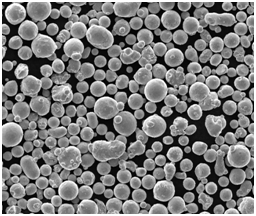
Composition de l'assemblage du lit de construction à haute température
Il est essentiel de comprendre la composition d'un assemblage de lit de construction à haute température pour choisir celui qui convient à votre application. Ces assemblages sont généralement constitués d'une combinaison de métaux, de céramiques et de composites, tous choisis pour leur capacité à supporter des températures élevées tout en conservant leur intégrité structurelle.
| Matériau | Composition | Propriétés | Exemples d'utilisation |
|---|---|---|---|
| Alliages d'aluminium | Aluminium avec additifs (par exemple, 6061, 7075) | Conductivité thermique élevée, légèreté, résistance modérée | Largement utilisé dans les lits à haute température à usage général |
| acier inoxydable | Fer, carbone, chrome, nickel | Haute résistance, résistance à la corrosion, faible conductivité thermique | Idéal pour les environnements où la durabilité est essentielle |
| Inconel | Superalliages nickel-chrome | Résistance exceptionnelle à la chaleur, résistance à l'oxydation | Utilisé dans l'aérospatiale et les applications industrielles de haute précision |
| Acier à outils | Carbone, tungstène, molybdène | Extrêmement dur, résistant à l'usure, conserve sa résistance à haute température | Convient aux applications lourdes |
| Revêtements céramiques | Carbure de silicium, oxyde d'aluminium | Résistance aux hautes températures, non conducteur, résistant à l'usure | Souvent utilisé comme revêtement de surface sur les lits métalliques |
| Composites en graphite | Graphite avec liants en résine | Stabilité thermique élevée, excellente conductivité thermique, légèreté | Utilisé pour les processus à très haute température |
| Alliages de cuivre | Cuivre avec des additifs tels que le chrome | Excellente conductivité thermique, conductivité électrique élevée | Convient aux applications nécessitant une réponse thermique rapide |
| PEEK | Polyéther éther cétone | Rapport résistance/poids élevé, excellente résistance chimique | Courant dans les procédés d'impression de plastiques spécialisés |
| Ultem | Polyétherimide (PEI) | Stabilité thermique élevée, retardateur de flamme | Utilisé dans les industries aérospatiale et automobile |
| Polymères renforcés de fibres de carbone | Fibres de carbone dans une matrice polymère | Rapport résistance/poids élevé, rigidité, résistance à la déformation à haute température | Utilisé dans des applications légères et à haute température |
Caractéristiques de l'assemblage du lit de construction à haute température
Lors de l'évaluation des lits de construction à haute température, il est important de prendre en compte leurs principales caractéristiques, qui auront une incidence directe sur la qualité de vos impressions et sur la longévité du lit de construction lui-même.
Conductivité thermique
La conductivité thermique est essentielle pour assurer une distribution uniforme de la chaleur sur le lit. Les métaux comme l'aluminium et le cuivre excellent dans ce domaine, garantissant une température constante, ce qui est essentiel pour éviter les déformations et assurer une adhésion uniforme sur l'ensemble de l'impression.
Stabilité de la température
Les matériaux tels que l'Inconel et les revêtements céramiques sont conçus pour être stables à des températures extrêmes. Cette caractéristique est essentielle pour les industries de haute précision telles que l'aérospatiale et l'automobile, où les moindres fluctuations de température peuvent entraîner des défauts.
Durabilité et résistance à l'usure
L'acier inoxydable et l'acier à outils sont réputés pour leur durabilité, en particulier dans les environnements où le lit de construction peut être soumis à des contraintes physiques, comme l'impression industrielle intensive.
Propriétés d'adhésion
La surface du lit de construction doit offrir une adhérence suffisante pour maintenir l'impression en place pendant le processus, tout en permettant de l'enlever facilement une fois l'impression terminée. Des revêtements comme le PEI ou des surfaces en aluminium spécialement traitées sont souvent utilisés à cette fin.
| Caractéristique | Meilleures options de matériaux | Importance |
|---|---|---|
| Conductivité thermique | Alliages d'aluminium et de cuivre | Assure un chauffage uniforme et réduit les déformations |
| Stabilité de la température | Inconel, revêtements céramiques | Prévient les déformations et les défauts dans les processus à haute température |
| Durabilité | Acier inoxydable, acier à outils | Garantit la longévité et résiste au stress physique |
| Propriétés d'adhésion | Revêtements PEI, aluminium texturé | Améliore l'adhérence de l'impression et réduit le nombre d'impressions ratées |
Avantages de la Assemblage du lit de construction à haute température
Alors, pourquoi investir dans un assemblage de lit de construction à haute température ? Voici les principaux avantages :
Précision et qualité
Les lits de construction à haute température permettent d'imprimer des matériaux de haute performance, ce qui se traduit par des pièces aux propriétés mécaniques, à la résistance à la chaleur et aux performances globales améliorées. Cette précision est cruciale pour des industries telles que l'aérospatiale, où la défaillance des pièces n'est pas envisageable.
Polyvalence
Ces lits de construction peuvent traiter une large gamme de matériaux, des thermoplastiques à haute température comme le PEEK et l'Ultem aux poudres métalliques utilisées dans le frittage laser direct des métaux (DMLS). Cette polyvalence les rend indispensables dans un environnement d'impression multi-matériaux.
Longévité
Les matériaux tels que l'Inconel et l'acier inoxydable sont incroyablement durables, ce qui signifie que votre lit de construction résistera à de nombreux cycles d'impression sans se dégrader, même dans des conditions continues de haute température.
Des résultats cohérents
Avec une conductivité thermique et une stabilité excellentes, ces lits fournissent des résultats constants, ce qui est particulièrement important pour la production par lots où chaque pièce doit répondre à des spécifications strictes.
| Avantage | Description |
|---|---|
| Précision et qualité | Permet une impression de haute précision avec des matériaux de premier ordre, essentielle pour les pièces de précision |
| Polyvalence | Compatible avec une large gamme de matériaux à haute température, améliorant les capacités de l'imprimante |
| Longévité | Les matériaux durables garantissent la longévité du lit de construction et réduisent les coûts de remplacement |
| Des résultats cohérents | Les propriétés thermiques fiables assurent une qualité d'impression uniforme, cruciale pour la production |
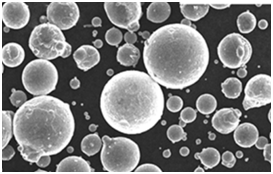


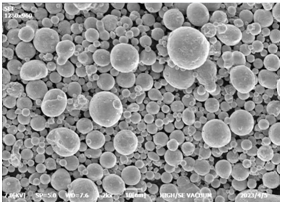
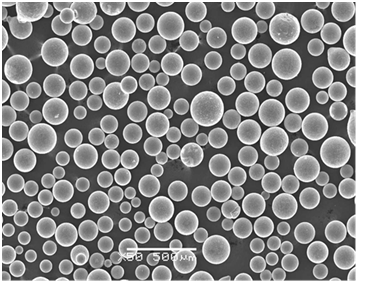

Applications de l'assemblage de lits de construction à haute température
Les bancs d'essais à haute température sont utilisés dans une grande variété d'industries, chacune avec des exigences et des normes uniques. Voici quelques-unes des applications les plus courantes :
| L'industrie | application | Matériau utilisé | Avantages |
|---|---|---|---|
| Aérospatiale | Fabrication de composants légers et très résistants | Inconel, fibre de carbone, PEEK | Haute précision, résistance à la température, durabilité |
| Automobile | Production de pièces de haute performance telles que des composants de moteur et des boucliers thermiques | Acier inoxydable, Ultem | Stabilité thermique élevée, résistance mécanique, résistance à la corrosion |
| Dispositifs médicaux | Implants et outils chirurgicaux sur mesure | Titane, PEEK | Biocompatibilité, précision, stérilisabilité |
| Électronique | Prototypage et production en petites séries de cartes de circuits imprimés et de dissipateurs thermiques | Alliages de cuivre, céramique | Excellente conductivité thermique, isolation électrique |
| Pétrole et gaz | Composants pour les environnements à haute température et à haute pression | Inconel, acier inoxydable | Résistance à la corrosion, haute résistance à des températures élevées |
| Défense | Production de composants d'armes et d'autres pièces soumises à des contraintes élevées | Acier à outils, Inconel | Durabilité extrême, résistance à la chaleur et à l'usure |
| L'énergie | Pièces pour turbines, réacteurs et autres équipements de production d'énergie | Inconel, acier inoxydable | Performance à haute température, résistance aux cycles thermiques |
| Biens de consommation | Articles spécialisés tels que bijoux personnalisés, montures de lunettes | Acier inoxydable, PEI | Esthétique, précision, durabilité |
| Architecture | Travail du métal sur mesure pour des applications structurelles et décoratives | Aluminium, acier inoxydable | Intégrité structurelle, résistance aux intempéries, flexibilité esthétique |
| Robotique | Composants pour systèmes robotiques à haute performance | Fibre de carbone, acier à outils | Léger, solide, thermiquement stable |
Spécifications, tailles, qualités et normes pour les assemblages de lits de construction à haute température
Choisir le bon assemblage de lit de construction à haute température exige de prêter attention à des détails spécifiques tels que la taille, la qualité et le respect des normes industrielles. Voici un aperçu des spécifications les plus courantes :
| Spécifications | Détails | Matériaux typiques |
|---|---|---|
| Taille | Personnalisable, les tailles courantes sont 300x300mm, 400x400mm, 500x500mm | Aluminium, acier inoxydable |
| Épaisseur | Gamme de 5 mm à 20 mm, en fonction de l'application | Inconel, acier à outils |
| Grade | Les matériaux utilisés sont les suivants : 6061 (aluminium), 304 (acier inoxydable), 718 (Inconel) | Aluminium, acier inoxydable, Inconel |
| Finition de la surface | Texturé, revêtu ou poli, en fonction des besoins d'adhérence | PEI, céramique, aluminium |
| Capacités de chauffage | Les chauffages intégrés peuvent aller de 100°C à 400°C | PEEK, Ultem, acier inoxydable |
| Normes de conformité | ASTM, ISO, ou normes industrielles spécifiques telles que ASME, FDA pour l'usage médical | Varie selon le secteur d'activité |
Fournisseurs et détails des prix pour les assemblages de lits de construction à haute température
Voici un aperçu des principaux fournisseurs de l'industrie, ainsi que des détails sur les prix pour vous aider à prendre une décision éclairée.
| Fournisseur | Matériel proposé | Fourchette de prix | Notes |
|---|---|---|---|
| McMaster-Carr | Acier inoxydable, alliages d'aluminium | 100 $ – ; 500 $ par feuille | Bon pour les lits à haute température à usage général |
| Protolabs | Inconel, acier à outils | 500 $ – ; 2000 $ par assemblage | Constructions sur mesure de haute précision |
| Grainger | Aluminium, acier inoxydable | 200 $ – ; 800 $ par feuille | Offre une large gamme de tailles et d'épaisseurs |
| Systèmes 3D | PEEK, Ultem | 1000 $ – ; 5000 $ par assemblage | Spécialisé dans les lits thermoplastiques à haute performance |
| EOS | Inconel, fibre de carbone | 3000 $ – ; 10000 $ par assemblage | Options haut de gamme pour les applications industrielles |
| Marqué au fer rouge | Fibre de carbone, acier inoxydable | 1500 – ; 7000 $ par assemblage | Connus pour leurs lits de construction en fibre de carbone |
| Stratasys | Ultem, PEEK | 2000$ – ; 6000$ par assemblage | L'accent est mis sur les matériaux thermoplastiques et composites |
| Arcam | Titane, acier inoxydable | 4 000 $ – ; 12 000 $ par assemblage | Spécialisé dans la fabrication additive métallique |
| Matérialiser | Aluminium, acier inoxydable | 500 $ – ; 3000 $ par assemblage | Fabrication sur mesure avec un souci du détail |
| Renishaw | Inconel, acier inoxydable | 3000 $ – ; 10000 $ par assemblage | Applications d'impression métallique haut de gamme |
Comparaison des options d'assemblage des lits de construction à haute température
Avec autant d'options sur le marché, comment choisir ? Voici une comparaison qui vous aidera à peser le pour et le contre :
| Matériau | Pour | Cons | Meilleur pour |
|---|---|---|---|
| Alliages d'aluminium | Léger, bonne conductivité thermique | Moins durable à très haute température | Impression à usage général |
| acier inoxydable | Durable, résistant à la corrosion, stable | Conductivité thermique inférieure à celle de l'aluminium | Environnements très stressants |
| Inconel | Résistance exceptionnelle à la chaleur, robustesse, résistance à l'oxydation | Coûteux, plus lourd que l'aluminium ou l'acier | Aérospatiale, fabrication de haute précision |
| Acier à outils | Extrêmement dur, résistant à l'usure | Peut être cassant, en particulier à très haute température | Applications industrielles lourdes |
| Revêtements céramiques | Résistance aux hautes températures, non conducteur | Peut être fragile, coûteux | Revêtements pour lits métalliques dans l'impression à haute température |
| Composites en graphite | Stabilité thermique élevée, excellente conductivité thermique | Peut être coûteux, fragile dans certaines configurations | Procédés à très haute température |
| Alliages de cuivre | Excellente conductivité thermique, conductivité électrique | Peut se corroder s'il n'est pas correctement protégé | Applications nécessitant une réponse thermique rapide |
| PEEK | Rapport résistance/poids élevé, résistance aux produits chimiques | Cher, limité aux imprimantes haut de gamme | Impression plastique spécialisée |
| Ultem | Stabilité thermique élevée, retardateur de flamme | Coûteux, limité à des applications industrielles spécifiques | Applications aérospatiales et automobiles |
| Polymères renforcés de fibres de carbone | Léger, solide, résistant à la déformation | Peut être coûteux, taille d'impression limitée | Applications légères à haute température |
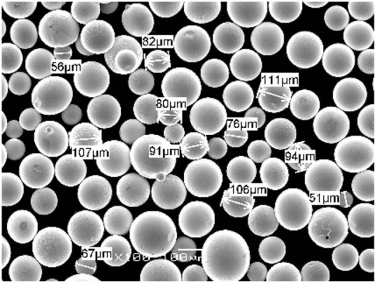
FAQ
Voici une brève section FAQ pour répondre aux questions les plus courantes :
| Question | Réponse |
|---|---|
| Quelle est la température maximale que ces lits de construction peuvent supporter ? | Cela dépend du matériau, mais en général, les lits de construction à haute température peuvent supporter des températures allant jusqu'à 400°C ou plus. |
| Puis-je utiliser un lit de construction à haute température pour l'impression 3D standard ? | Oui, mais cela peut être excessif à moins que vous n'imprimiez avec des matériaux à haute température comme le PEEK, l'Ultem ou des métaux. |
| Comment entretenir mon lit de construction à haute température ? | Il est essentiel de procéder à un nettoyage régulier et de vérifier l'absence d'usure ou de dommages. Pour les lits métalliques, un resurfaçage occasionnel peut être nécessaire. |
| Y a-t-il une différence significative dans la qualité d'impression ? | Absolument ! Le bon lit de construction peut améliorer considérablement l'adhérence de l'impression, réduire le gauchissement et permettre des impressions plus lisses et plus précises. |
| Les lits de construction à haute température valent-ils l'investissement ? | Si vous travaillez avec des matériaux à haute température ou si vous avez besoin de précision dans des applications industrielles, l'investissement en vaut vraiment la peine. |
| Est-il possible d'équiper une imprimante standard d'un lit de construction à haute température ? | Oui, mais assurez-vous que le micrologiciel et le matériel de votre imprimante peuvent supporter la charge thermique accrue. |
| Ces lits nécessitent-ils des adhésifs spéciaux ? | Certains matériaux peuvent nécessiter des adhésifs spécifiques, tandis que d'autres dépendent de la texture de la surface ou du revêtement pour adhérer. |
| Quelle est la durée de vie de ces lits de construction ? | Avec un entretien adéquat, les lits de construction à haute température peuvent durer des années, mais cela dépend du matériau et de la fréquence d'utilisation. |
Conclusion
Les assemblages de lits de construction à haute température sont un composant essentiel pour toute personne impliquée dans l'impression 3D industrielle ou à haute performance. Que vous imprimiez avec du PEEK, de l'Ultem, des métaux ou d'autres matériaux exigeants, ces lits offrent la stabilité thermique, la durabilité et la précision nécessaires pour obtenir des résultats de premier ordre. Investir dans le bon assemblage de lit de construction à haute température garantit non seulement une meilleure qualité d'impression, mais prolonge également la durée de vie de votre imprimante et réduit la fréquence des échecs d'impression. Avec la large gamme de matériaux et de configurations disponibles, il existe un assemblage de lit de construction à haute température adapté à chaque application, ce qui en fait une considération cruciale pour toute installation d'impression 3D sérieuse.

